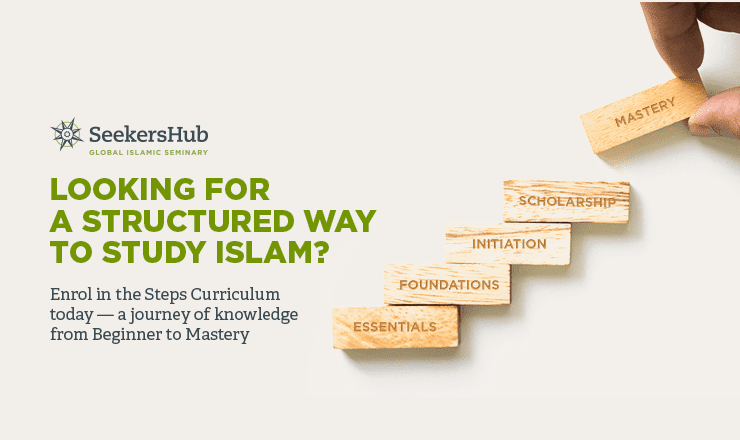The SeekersGuidance Steps Curriculum Explained
The SeekersGuidance Steps Curriculum allows you to navigate your journey from an absolute beginner in the Islamic sciences to scholarship and mastery.
The curriculum is modelled on the traditional method of teaching the Islamic sciences in large mosques, as Imam As-Shafi did in Cairo, Imam Abu Hanifa in Kufa, and other great scholars all over the Muslim world.
Students who attended these classes were arranged into a small inner circle of close and serious students, and much larger outer circles of less serious students, who flocked from all over the city, often even from all of the world, to listen to the great scholars.
The teacher interacted with the two circles in different ways. The inner circle was allowed to ask questions. The outer circles were only sometimes allowed to ask questions during class, and sometimes not allowed to ask any questions at all, but would be reminded of Allah by listening to a great teacher. Everyone had the opportunity to benefit from great scholars like Imam al-Shafi’i or Imam Abu Hanifa. The inner circle were nurtured and mentored towards scholarship; the outer circles were guided towards veneration of the divine command.
At the SeekersGuidance Islamic Seminary, our students are divided into three circles.
- They learn the technical terms of each Islamic science.
- They learn the key questions of each Islamic science.
- They learn about the historical development of each Islamic science.
- They learn about important contemporary issues tackled by that science today
Advanced students who successfully complete Steps Three and Four will receive a degree of scholarship in the Islamic sciences. Full-time students who are on the SeekersGuidance learning scholarships are required to earn this degree in order to complete their studies.

